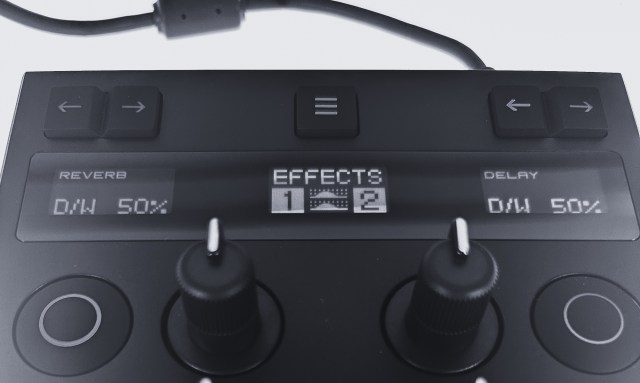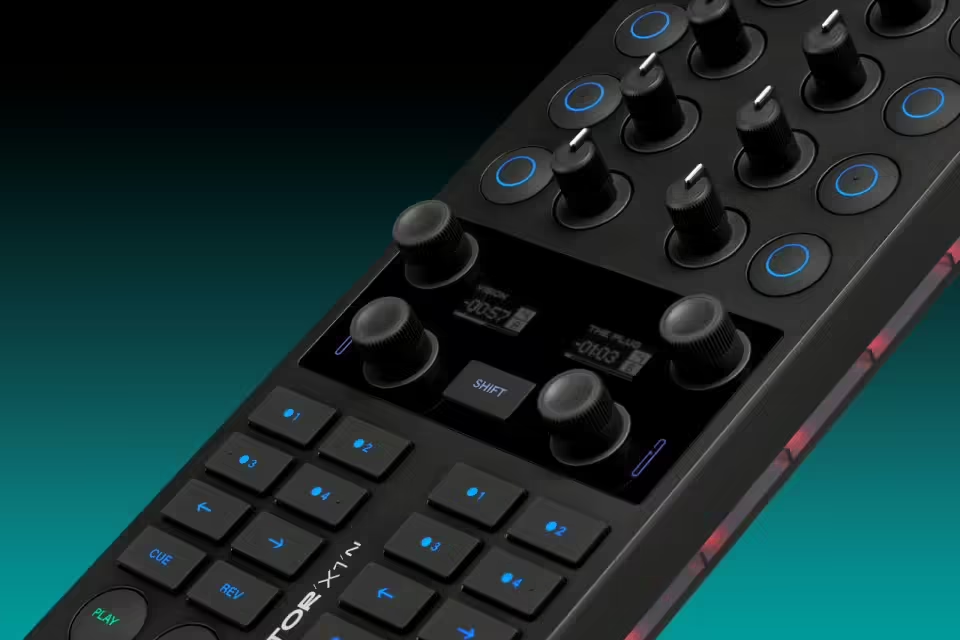Traktor X1 MK3: A First Look – DJ TechTools
In 2001, I switched to DJing with Traktor because it allowed me to use MIDI controllers and customize them to create new ways of playing. The modularity they offered was exciting and very innovative. Then MIDI controllers became standardized, and sadly, no custom mapped them anymore. As the years went by, DJ hardware became just as good as software and took over everything.
You all know this story, so why am I sharing this now? Because the new Traktor X1 controller from Native Instruments feels like more than just a sexy new update of a classic product. It feels like the beginning of something new, reminiscent of the classic days of old. 20-year cycles? Is Traktor coming back? Don’t count it out.

Yes, the new controller from Native Instruments is very good-looking – dare I say, sexy? It’s also super functional, effortlessly doubling as both a mixer controller and an FX controller. A solid update on the original classic – most people will want to upgrade to this if they are still have use for a X1 style controller. I am more interested in what this release says about Native Instruments and the future of Traktor.
Here are a few notable facts:
- The newest version of Traktor required to run this controller has a brand-new logo
- The branding on the X1 Mk3 is completely refreshed
- The styling of the Mk3 controller is a fresh departure from previous generations of hardware
In short, NI seems to be kicking a complete rebrand of Traktor with the X1 controller. Speculating wildly, this suggests to me that they are heading out in a new direction, leading with a modular controller. This is super encouraging and implies that perhaps the ingenious folks in Berlin are returning to their roots with creative tools for DJs who perform on stage.
Fantasy aside, let’s discuss the specifics of this device
Essential Stats of the Traktor X1 MK3
Cost: $299
- Five OLED displays
- Light-based notification system
- Customizable button colors and backlighting
- Three-port USB hub
- Mixer mode and effects mode
- Traktor Pro 3 included
- Two months of Beatsource or Beatport streaming included
- Dimensions = Height: 129 mm / Width: 323 mm /Depth: 56 mm
- Weight: 754 g
The Evolution of the X1 over the years
I personally found the original X1 to be the best version and never upgraded to MK2. I would buy old controllers off eBay until they inevitably broke from hard use. While not the most reliable thing in my bag, it had a wonderfully simple and intuitive layout. This new version, the X1 MK3, reintroduces the layout of the MK1 with some significant improvements that make it a very attractive upgrade option.
These can be categorized into three main areas:
- Screens
- Hardware feel and performance
- Function flexibility
Function Flexibility

The new X1 is considerably more functional than V1 or V2, as the upper section elegantly switches between controlling FX and the internal mixer. This means you could DJ with just this compact controller and do a commendable job with it. In reality, I found this switching tedious since the knobs are fixed, and the values need to be matched up. It’s more likely that a DJ will choose either the FX or Mixer mode and stick with it.
The old X1 could be mapped to handle both tasks, but with the new displays showing operations on the hardware clearly, it becomes much more feasible.
Screens
There are now five little OLED screens that provide essential information about software operations on your hardware. These show:
- The mode of the upper section (Mixer or Effects?)
- Which effect is loaded and the knob’s value?
- Basic info about the deck.
Aesthetically, I love these new screens. They’re single-colored, clear, and stylish. Practically, I’m not sure they add substantial value. Let’s examine each section:
MODE SCREEN – Vital and useful. It shows the mode and provides a level meter for the master output.
FX KNOB STATES – Not so crucial. These screens show the knob values. Somewhat redundant since I can see the knob itself. It would be more useful if it aided in reconciling the knob’s position when switching between mixer and FX, but it currently doesn’t.
DECK STATUS – Essential, but could be more helpful. It displays a snippet of the current playing deck, elapsed time, which deck you’re controlling, and the selected loop size. All vital information, especially when managing multiple songs. However, there’s a trade-off. We get more details but lose the large visibility of the previous loop indicator. I’d prefer a larger, flashing loop number over the song name, but opinions may vary.
Hardware Feel and Performance

This is a significant upgrade, and it seems to be a focal point of this refresh. The actual controls are vastly superior, making one eager for the new version. Hopefully, these exceptional knobs and buttons will outlast the original MK1, which often broke with rigorous use. Three elements received updates:
- Encoders – Roughly the same size and feel, no significant change.
- Knobs – Larger, with a softer touch, a clear center indicator, and detent.
- Buttons – Soft to touch and much larger, significantly more playable.
The buttons stand out. They’re large, responsive, and have a good soft feel. Native Instruments seems to have listened to those who appreciate tactile feedback, delivering their best in this style.
The knobs are impressive, with large shafts and distinct center markings. You’ll immediately notice the pronounced center detent hole, which indicates 0. With many controllers, it’s tricky to find the 0 spot, leading to accidental slight filter adjustments. That’s NOT the case here. NI has found a knob that feels perfect for resetting to 0.
The encoders have been updated in appearance but retain the same size and feel.
Lighting Performance and USB HUB
A pleasant feature is the easily customizable lighting. You can modify the colors of all the lights and dictate their behavior in various scenarios.
There’s also a transparent base, allowing ground lighting to indicate playing decks and active loops – a useful feature in dim club settings.
Lastly, when using the provided power supply, each X1 doubles as a USB hub for three other controllers. Ingeniously, you can connect a full set of four through a single USB output on a laptop.
Conclusion: Is the Traktor X1 MK3 Worth the Upgrade?
Absolutely, yes. This is a commendable creation by the team. If I were currently touring in clubs (which I’m not), I would unquestionably be using two of these in conjunction with an external mixer. I admire the fresh style, the rebrand, and the return to the original layout.
Do people still use Traktor? Admittedly, fewer do compared to its heyday. However, at this juncture, many must be growing weary of the CDJ dominance and looking for something to differentiate themselves. I’d be surprised if we don’t see many of these featuring on Boiler Room live streams as the new generation of DJs explores innovative ways to perform.


